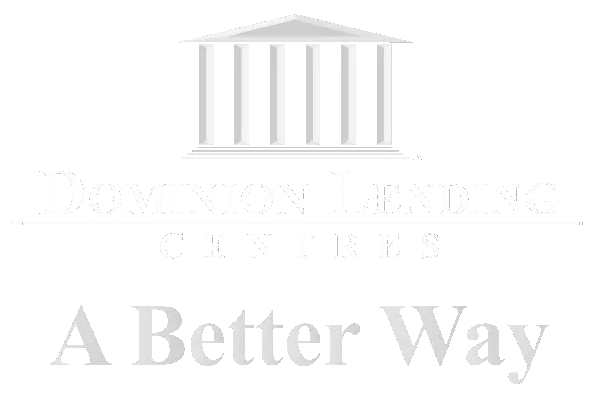Blog Post
Are Interest Rates Going Up and Down at the Same Time? COVID-19
Rita Wagner • April 7, 2020

If you’re paying more attention to the Canadian economy due to COVID-19, and it seems like you’re getting mixed messages; that mortgage interest rates are going both up and down at the same time, you’re not that far off. There are a lot of moving parts, and to find clarity, we need to make sure we’re comparing apples to apples, and oranges to oranges.
Let’s begin by acknowledging that not all interest rates are the same. The term “interest rates” can mean a lot of different things in news story headlines.
The Government “overnight rate” is different from the “qualifying rate”, which is different from the banks “prime rate”, which is different from “variable rates”, which is different from the “discount on a variable rate” which is different from “fixed rates”.
Here’s a list of the different types of mortgage rates, a quick summary of what they are, the direction they’re going, and how they impact you.
Target for the Overnight Rate.
Also known as the policy rate, this is the rate that the Bank of Canada (The Government) controls. When the Bank of Canada changes the Target for the Overnight Rate, this change affects other interest rates in the economy.
Typically there are only eight days in the year for the Bank of Canada to announce if they will change the rate. However, given the recent COVID-19, the Bank of Canada has made special announcements.
The overnight rate was set with a target of 1.75% for a long time before the pandemic.
March 4th 2020, the rate was lowered to 1.25%. March 16th 2020, the rate was lowered to 0.75% in an emergency rate cut. March 27th 2020, the rate was lowered to 0.25% in a second emergency rate cut.
The overnight rate now sits at 0.25% with April 15th 2020, as the next scheduled announcement date.
By cutting interest rates, the government hopes to stimulate economic growth. Lower financing costs encourages borrowing and investing, which is what our government believes will get us through this pandemic.
Qualifying Rate
Also known as the Benchmark Qualifying Rate or the five year qualifying posted rate, this is another rate set by the government. If you’re getting an insured mortgage, the government wants to make sure you will be able to afford your mortgage at the end of your term (in case interest rates go up). So they make you qualify for your mortgage at a higher rate than you will actually be paying.
The government has recently dropped the qualifying rate from 5.19% to 5.04%. This decrease, like the drop in the overnight rate, is meant to help stimulate the economy. The average Canadian will qualify to borrow an additional $10,000 with this drop.
Banks Prime Rate
The banks prime lending rate isn’t the same as the overnight rate; however, the banks prime lending rate is impacted by the overnight rate. Each bank sets its own prime lending rate. When the Bank of Canada moves the overnight rate, typically the prime rate at each bank will follow.
Because of the emergency rate cut on March 27th, banks lowered their prime lending rate to 2.45%. Some banks moved immediately, while some made the change effective April 1st, which means the savings will be seen on May 1st, but they all did lower their prime rates.
The prime lending rate is used by banks to determine rates on floating mortgage products (like the variable rate), lines of credit, home equity lines of credit (HELOC), and some credit cards.
If you currently have a variable rate mortgage or a HELOC, a lower prime rate means that you are now paying less interest on your existing mortgage, this is a good thing.
Variable Rate Mortgage
A variable rate mortgage is a mortgage that fluctuates with the prime lending rate. Typically, the mortgage rate will change with the prime lending rate and includes a “component” or “discount” to the prime rate +/- a specified amount, such as Prime - 0.45%. The lender sets this component to prime.
So, if you have a variable rate mortgage at Prime -0.45%, the rate you’d be paying today (with a prime rate of 2.45%) is 2%.
This is where it gets a little confusing because while the government is trying to stimulate the economy by lowering the overnight rate, banks have followed by lowering their prime rate, but at the same time have increased the component to prime - by the same amount of 0.5% or in some cases even more.
Although there are immediate savings for existing variable rate mortgage holders, anyone looking to get a new variable rate mortgage will do so at a higher rate than a few weeks ago.
Fixed Rate Mortgage
As its name suggests, a fixed rate mortgage is where your mortgage rate stays the same throughout your term. Your rate isn’t tied to the prime lending rate but rather is unmoved by outside factors. With all the uncertainty in the Canadian economy, lenders have actually been increasing rates for new fixed rate mortgages.
So while the government is doing all they can to keep rates low, why are banks increasing fixed rate mortgages?
Well, banks are in the business of making money, and given that over 2 million Canadians have applied for some kind of assistance to get through COVID-19, the fear is that mortgage delinquency will go up considerably as the coronavirus financially impacts people.
Banks are increasing fixed rates to protect themselves against economic uncertainty.
So what does this mean for you? Well, as everyone’s financial situation is different, it’s impossible to give blanket advice that applies to everyone. But here is some general advice.
Existing Variable Rate Holders
You’re doing well. The recent drop in the banks prime rate to 2.45% has lowered the amount of interest you are paying on your mortgage. You have a discount to prime for the remainder of your term that isn’t currently available in the market. Your mortgage rate is one of the lowest in Canadian history.
As the next announcement by the government will be April 15th 2020, there is a chance your rate could go even lower.
If at this time, you’re considering locking your variable rate into a fixed rate, that would significantly increase the amount of interest you are paying. As fixed rates have increased over the last weeks, this isn’t a good option right now.
The reason you went variable in the first place is the reason you should stay variable at this point. With all the economic uncertainty, the prime rate won’t be going up anytime soon.
Existing Fixed Rate Mortgage Holders
Your fixed rate is set lower than the fixed rates currently being offered. If you break your term now, you will incur a higher penalty. So unless you must make a move, it would probably be best just to stay the course.
Hopefully, fixed rates will go down when the economic uncertainty winds down, and rates will be in a good spot when your term comes up for renewal.
Are you looking for a new mortgage?
The most important thing for you going forward is flexibility. Variable rates are still historically low, and although fixed rate mortgages have gone up over the last weeks, there are still lots of great mortgage options available on the market.
The best place to start is to contact me directly so we can go over your financial situation and discuss the best plan for you to move ahead in these uncertain times.
So although it may appear that mortgage interest rates are going both up and down at the same time, understanding what is meant by “interest rates” is crucial. The government is lowering rates to stimulate the economy, while banks are trying to protect themselves against future losses by increasing rates while they can.
RECENT POSTS

By Rita Wagner
•
February 24, 2025
Navigating Mortgage Rates in an Uncertain Market With Canada’s economy facing trade tensions, inflation concerns, and a potential slowdown, mortgage rates are in flux. Borrowers must weigh the risks and rewards of fixed vs. variable rates to make the best decision for their financial future. What’s Driving Mortgage Rate Changes? Several key factors are shaping the mortgage landscape: Trade Uncertainty – New tariffs between the U.S. and Canada could push inflation higher, impacting bond yields and fixed mortgage rates. Inflation Pressures – If inflation stays above the Bank of Canada’s 2% target, rate cuts may be delayed, keeping borrowing costs higher. Recession Concerns – If economic growth slows, the BoC could cut rates, making variable-rate mortgages more attractive. Fixed vs. Variable: Which One is Right for You? 🔒 Fixed-Rate Mortgages: ✅ Predictable payments for peace of mind ✅ Protection from future rate hikes ❌ Typically higher initial rates ❌ Costly penalties if you break your term early 📊 Variable-Rate Mortgages: ✅ Lower starting rates with potential for savings ✅ Easier to break or refinance if needed ❌ Payments can fluctuate with rate changes ❌ Higher risk if inflation pushes rates upward What’s the Best Move Right Now? ✔ Go Fixed if you want stability and protection from rising rates. ✔ Go Variable if you believe rates will drop and you can handle some risk. ✔ Consider a Hybrid Mortgage to get the best of both worlds. Stay Flexible & Informed Mortgage rates are unpredictable, and the best choice today may change in a few months. Working with a mortgage professional can help you navigate these shifts and secure the best deal for your financial future. Need expert guidance? Reach out today to discuss your options!

By Rita Wagner
•
February 13, 2025
If you’re looking to purchase a property, although you might not think it matters too much, the source of your downpayment means a great deal to the lender. Let’s discuss the lender requirements, what your downpayment tells the lender about your financial situation, a how downpayment helps establish the mortgage loan to value. Anti-money laundering Lenders care about your downpayment source because, legally, they have to. To prevent money laundering, lenders have to document the source of the downpayment on every home purchase. Acceptable forms of downpayment are money from your resources, borrowed funds through an insured program called the FlexDown, or money you receive as a gift from an immediate family member. To prove the funds are from your resources and not laundered money from the proceeds of crime, you’ll be required to provide bank statements showing the money has been in your account for at least 90 days or that you’ve accumulated the funds through payroll deposits or other acceptable means. Now, if you’re borrowing all or part of your downpayment, you’ll need to include the costs of carrying the payments on the borrowed downpayment in your debt service ratios. If you’re the recipient of a gift from a direct family member, you’ll need to provide a signed gift letter indicating that the funds are a true gift and have no schedule for repayment. From there, you’ll need to show the money deposit into your account. Financial suitability Lenders care about the source of the downpayment because it is an indicator that you are financially able to purchase the property. Showing the lender that your downpayment is coming from your resources is the best. This demonstrates that you have positive cash flow and that you’re able to save money and manage your finances in a way that indicates you’ll most likely make your mortgage payments on time. If your downpayment is borrowed or from a gift, there’s a chance that they’ll want to scrutinize the rest of your application more closely. The bigger your downpayment, the better, well, as far as the lender is concerned. The way they see it, there is a direct correlation between how much money you have as equity to the likelihood you will or won’t default on their mortgage. Essentially, the more equity you have, the less likely you will walk away from the mortgage, which lessens their risk. Downpayment establishes the loan to value (LTV) Thirdly, your downpayment establishes the loan to value ratio. The loan to value ratio or LTV is the percentage of the property’s value compared to the mortgage amount. In Canada, a lender cannot lend more than 95% of a property’s value. So, if you’re buying a home for $400k, the lender can lend $380k, and you’re responsible for coming up with 5%, $ 20k in this situation. But you might be asking yourself, how does the source of the downpayment impact LTV? Great question, and to answer this, we have to look at how to establish property value. Simply put, something is worth what someone is willing to pay for it and what someone is willing to sell it for. Of course, within reason, having no external factors coming into play. When dealing with real estate, an appraisal of the property will include comparisons of what other people have agreed to pay for similar properties in the past. You’ll often hear of situations where buyers and sellers try to inflate the sale price to help finalize the transaction artificially. Any scenario where the buyer isn’t coming up with all of the money for the downpayment, independent of the seller, impacts the LTV. All details of a real estate transaction purchase and sale have to be disclosed to the lender. If there’s any money transferring behind the scenes, this impacts the LTV, and the lender won’t proceed with financing. Non-disclosure to the lender is mortgage fraud. So there you have it; hopefully, this provides context to why lenders ask for documents to prove the source of your downpayment. If you’d like to talk about mortgage financing, please connect anytime; it would be a pleasure to work with you.

By Rita Wagner
•
January 30, 2025
If you’re going through or considering a divorce or separation, you might not be aware that there are mortgage products designed to allow you to refinance your property and buy out your ex-spouse. If you’re like most people, your property is your most significant asset and is where most of your equity is tied up. If this is the case, it’s possible to structure a new mortgage that allows you to purchase the property from your ex-spouse for up to 95% of the property’s value. Alternatively, if your ex-spouse wants to keep the property, they can buy you out using the same program. It’s called the spousal buyout program. Here are some of the common questions people have about the program. Is a finalized separation agreement required? Yes. To qualify, you’ll need to provide the lender with a copy of the signed separation agreement, which clearly outlines asset allocation. Can the net proceeds be used for home renovations or pay off loans? No. The net proceeds can only buy out the other owner’s share of equity and/or pay off joint debt as explicitly agreed upon in the finalized separation agreement. What is the maximum amount that you can access through the program? The maximum equity you can withdraw is the amount agreed upon in the separation agreement to buy out the other owner’s share of the property and/or retire joint debts (if any), not exceeding 95% loan to value. What is the maximum permitted loan to value? The maximum loan to value is the lesser of 95% or the remaining mortgage + the equity required to buy out other owner and/or pay off joint debt (which, in some cases, can total < 95% LTV. The property must be the primary owner-occupied residence. Do all parties have to be on title? Yes. All parties to the transaction have to be current registered owners on title. Your solicitor will be required to confirm this with a title search. Do the parties have to be a married or common-law couple? No. Not only will the spousal buyout program support married and common-law couples who are divorcing or separating, but it’s also designed for friends or siblings who need an exit from a mortgage. The lender can consider this on an exception basis with insurer approval. In this case, as there won’t be a separation agreement, a standard clause will need to be included in the purchase contract to outline the buyout. Is a full appraisal required? Yes. When considering this type of mortgage, a physical appraisal of the property is required as part of the necessary documents to finalize the transaction. While this is a good start to answering some of the questions you might have about getting a mortgage to help you through a marital breakdown, it’s certainly not comprehensive. When you work with an independent mortgage professional, not only do you get a choice between lenders and considerably more mortgage options, but you get the unbiased mortgage advice to ensure you understand all your options and get the right mortgage for you. Please connect anytime; it would be a pleasure to discuss your needs directly and provide you with options to help you secure the best mortgage financing available. Also, please be assured that all communication will be held in the strictest of confidence.
© 2025
All Rights Reserved. Rita Wagner | Dominion Lending Centres A Better Way



